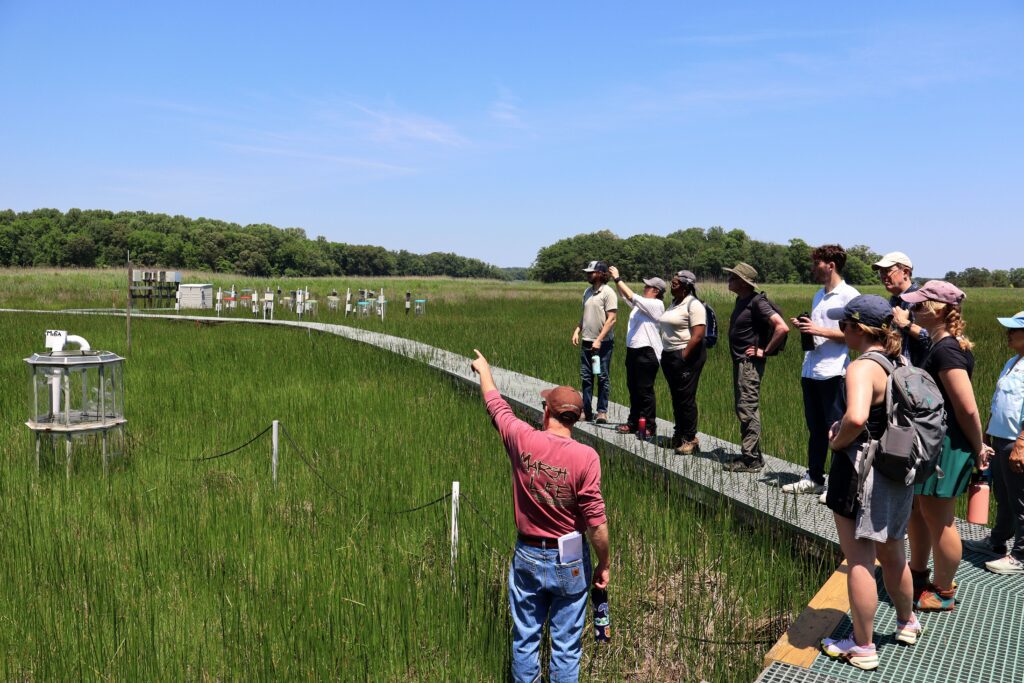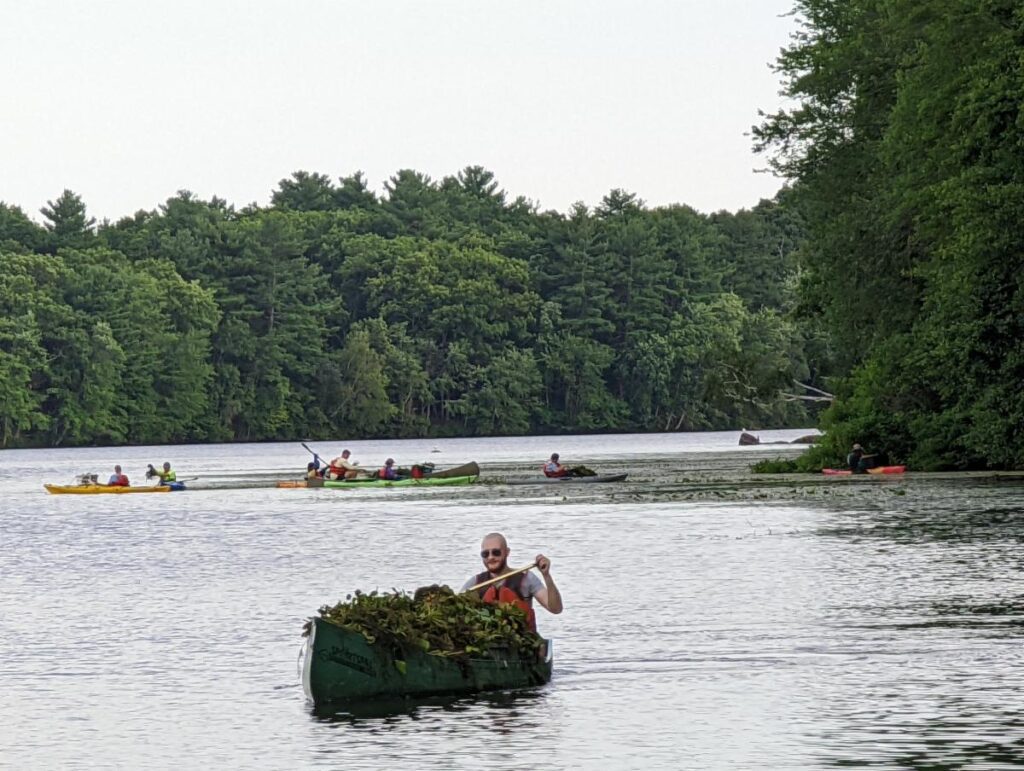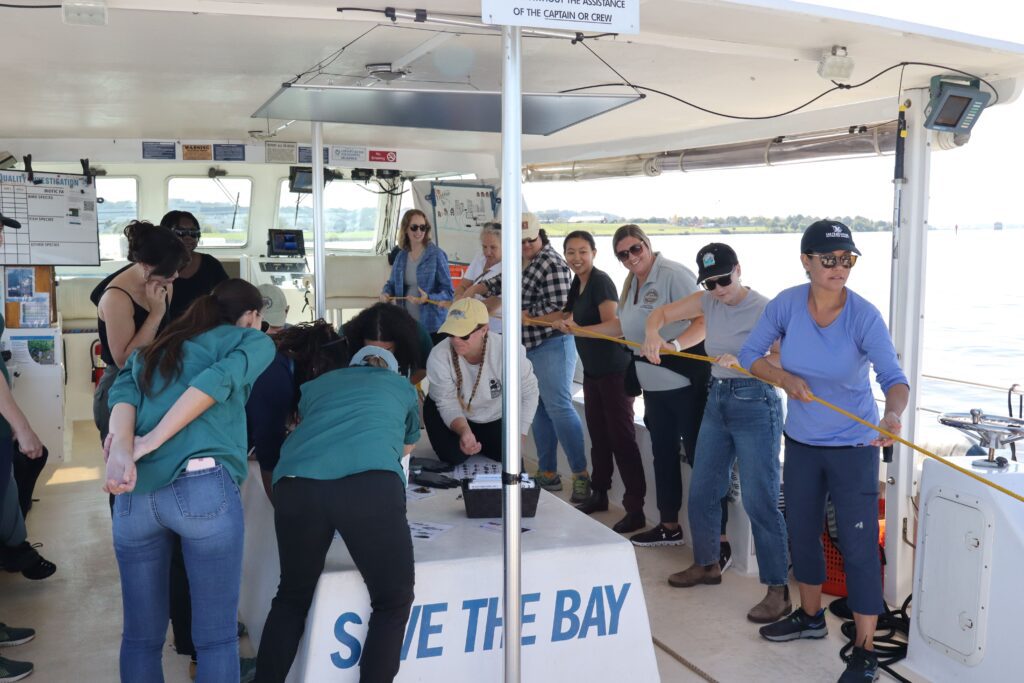Partner Highlight Restore America's Estuaries : Brad Williamson Manager, Government Affairs & Communications
Tell us about Restore America’s Estuaries (RAE) and its impact.Restore America’s Estuaries (RAE) is a national nonprofit dedicated to protecting and restoring bays, estuaries, and coasts as essential resources for all people. We represent 10 coastal conservation organizations from across the country and manage grant programs on the East, West, and Gulf coasts as well as the Great Lakes.
We drive impactful conservation through advocacy, on-the-ground restoration, and building strategic partnerships through our annual events such as the Coastal & Estuarine Summit and the Living Shorelines Tech Transfer Workshop. Since our founding, we’ve helped restore thousands of acres of vital habitat, strengthen coastal economies, and empower local communities.
Blue Carbon is a focus area for RAE, what is blue carbon and why is it a key focus area?
Blue carbon refers to the carbon captured and stored by coastal ecosystems, such as salt marshes, seagrasses, and mangroves. These habitats act as powerful carbon sinks, sequestering carbon at rates far higher than terrestrial forests while also providing critical benefits like shoreline protection, water filtration, and habitat for marine life. One of the main differences between blue carbon and marine carbon is the threat of destruction that blue carbon ecosystems face from human development. As coastal areas are developed, not only do these ecosystems lose their ability to sequester carbon, but they release the carbon they previously stored creating a one-two punch of carbon pollution.
At Restore America’s Estuaries, blue carbon is a key focus because it plays a vital role in combating climate change while enhancing coastal resilience. Through our work with the Blue Carbon National Working Group and our partnerships with organizations such as Pew Charitable Trust, we are leveraging our network to restore blue carbon ecosystems.

Members of the Blue Carbon National Working Group tour the Smithsonian Environmental Reseach Center
You all administer a few grant programs to assist coastal communities. Can you share a success story from one of your grant programs and how it encapsulates your approach?
We manage several federal grants, all with the same mission: protecting clean and healthy water for communities across the country. One of the programs we manage is the Southeast New England Programs Watershed Implementation Grants (SNEP/SWIG) funded by the US Environmental Protection Agency to fund community led restoration projects.

SNEP funded project removes invasive species from riverway.
Over several years, we have funded a wide variety of projects including habitat restoration, dam removal, and even a cranberry bog refurbishment. We recently profiled a few of our grantees who are conducting stormwater management projects in Providence, Rhode Island in an effort to save money, clean up waterways, and beautify the city through the use of green infrastructure. For the past several decades, gray infrastructure – stormwater management systems built out of concrete (i.e., pipes, tunnels, culverts)- has dominated urban planning and design. Green infrastructure is an alternative form that use nature-based solutions to replace traditional gray infrastructure with more efficient and economically sound projects such as rain gardens, swales, and better urban design.
These swales and rain gardens reduce flood risk by absorbing water that cannot permeate gray infrastructure, serving as valuable tools in a city’s stormwater management plan while also benefiting the local ecosystem. They effectively remove pollutants from runoff and capture sediment from upstream sources, reducing erosion. When properly designed and implemented, they often cost less to maintain than other infrastructure, saving municipalities money in the long run.
The Costal Restoration Toolkit seems to be a great resource, how did this resource come to be and who is it intended for?
The Coastal Restoration Toolkit was created a few years ago in partnership with the NOAA Fisheries Office of Habitat Conservation to support coastal communities and residents interested in using restoration to improve the condition of coastal habitats. Recognizing that many communities want to take action but may not know where to start, RAE developed this resource as a user-friendly guide to help navigate the restoration process.
Whether someone is working on a project related to flooding, coastal erosion, water quality, invasive species, or wildlife habitat, the toolkit offers a step-by-step guide for how to get started. Broken down into geographic regions, it provides local region-specific advice on how to tackle any coastal problem.
Designed for community groups, local governments, NGOs, and anyone interested in coastal restoration, the Toolkit provides step-by-step guidance on project planning, permitting, funding opportunities, and best practices for restoring habitats like salt marshes, oyster reefs, and seagrasses.
What are you most excited about when thinking about RAE’s work in 2025?
Getting people out on the water! This year is RAE’s 30th anniversary and we have plenty of opportunities to connect individuals to the waterways they care about.

RAE Summit attendees conduct biological sampling on the Potomac River
Coming up this October 29 &30, we are hosting the 2025 Living Shorelines Tech Transfer Workshop in New Haven, CT during which we offer professionals a chance to see coastal restoration work being done while sharing their experiences.
We are also commemorating our 30th Anniversary this year with a celebration during National Estuaries Week! National Estuaries Week is a time for people to share what makes their estuaries special and to take some time to give back. Last year, we had over 40 projects happening during National Estuaries Week with thousands of volunteers getting out into nature. This year, we hope to continue to grow that number to demonstrate just how important estuaries are to us all!
